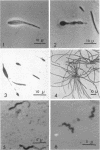Abstract
Anderson, J. I. W. (Northeast Shellfish Sanitation Research Center, Narragansett, R.I.), and W. P. Heffernan. Isolation and characterization of filterable marine bacteria. J. Bacteriol 90:1713–1718. 1965.—By a process of double filtration of seawater, first through a membrane filter with a pore diameter of 0.45 μ and then through a membrane filter with a pore diameter of 0.22 μ, it was possible to isolate on the surface of the latter membrane a group of marine organisms not usually encountered by conventional techniques of pour plates or one-stage filtration. Many of the isolates could not be identified, but the largest single group belonged to the genus Spirillum; other isolates were placed in the genera Leucothrix, Flavobacterium, Cytophaga, and Vibrio. A group of four organisms which was not identified was characterized by the formation of large, club-shaped cells, 20 to 30 μ long. Of the 25 strains studied in detail, 22 required seawater for growth and 8 retained their filterable property after cultivation. No filterable bacteria were isolated from terrestrial samples.
Full text
PDF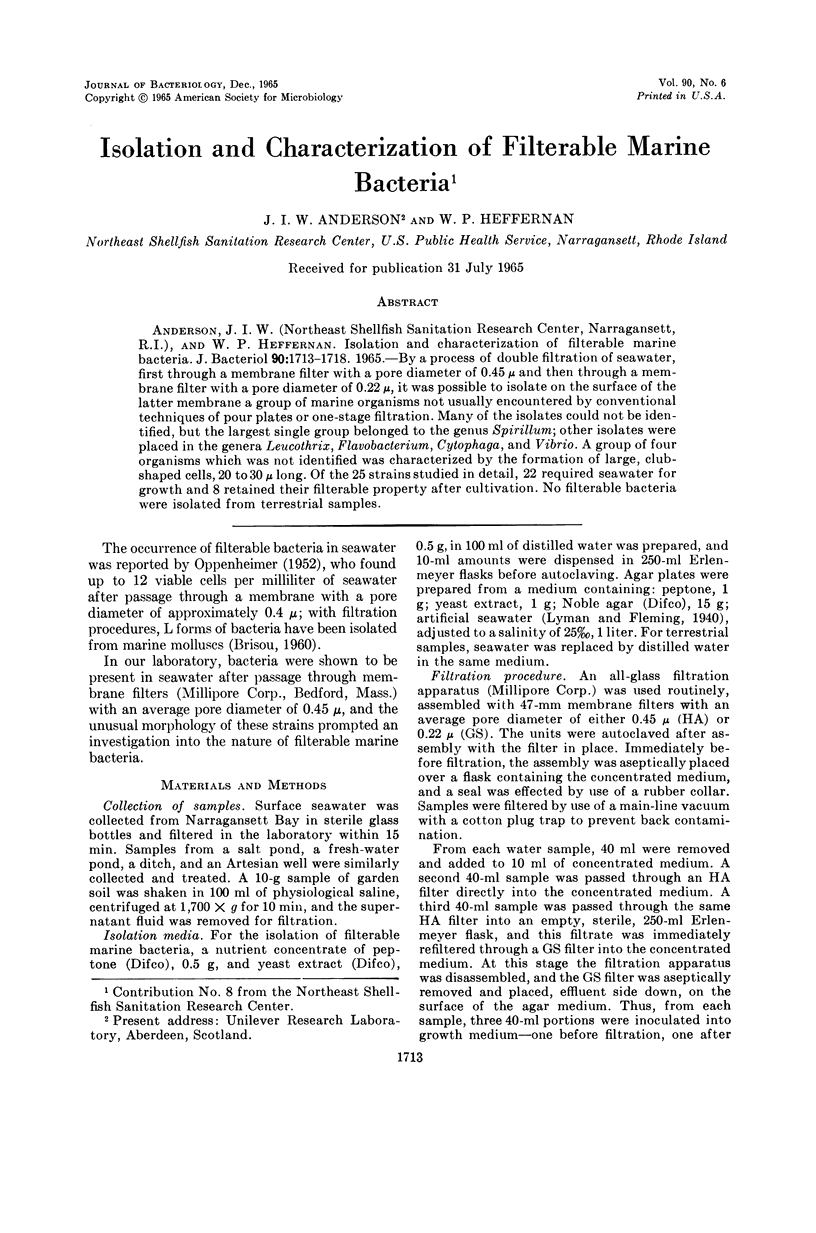
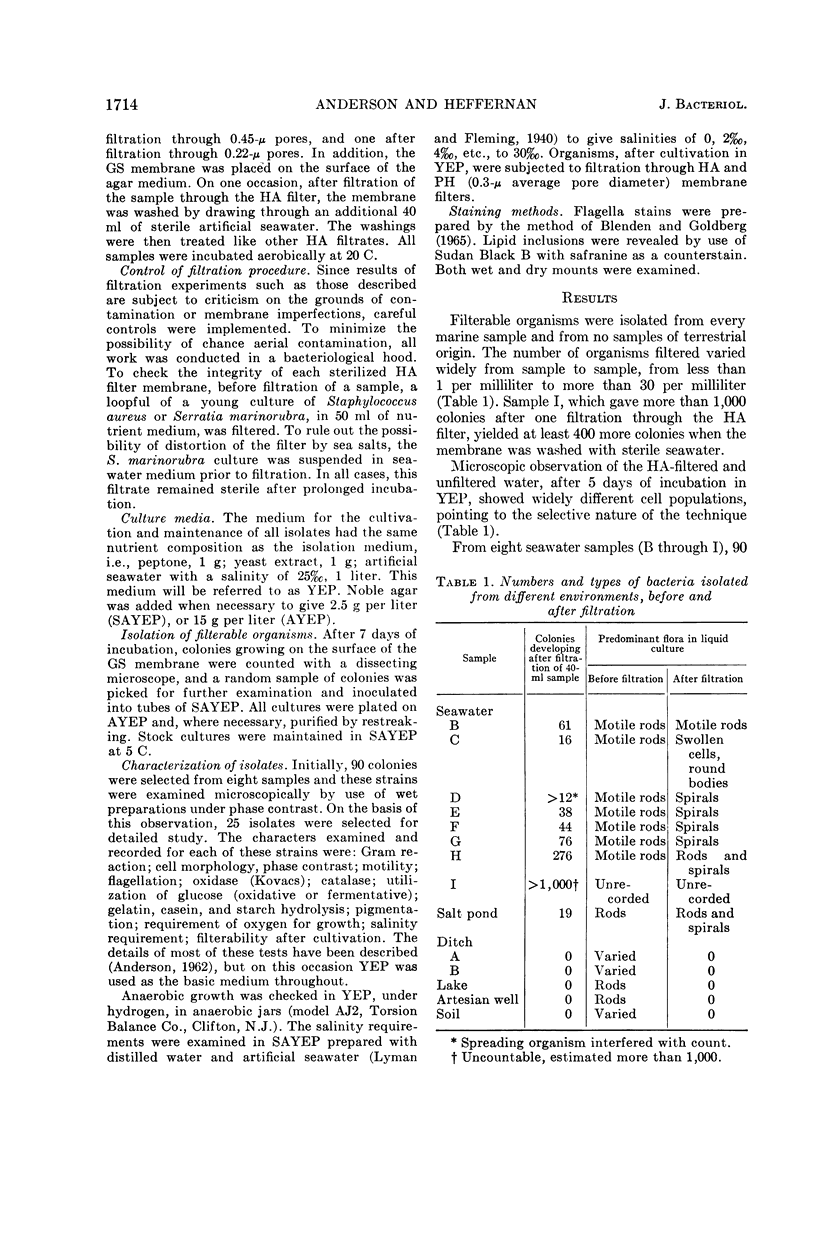
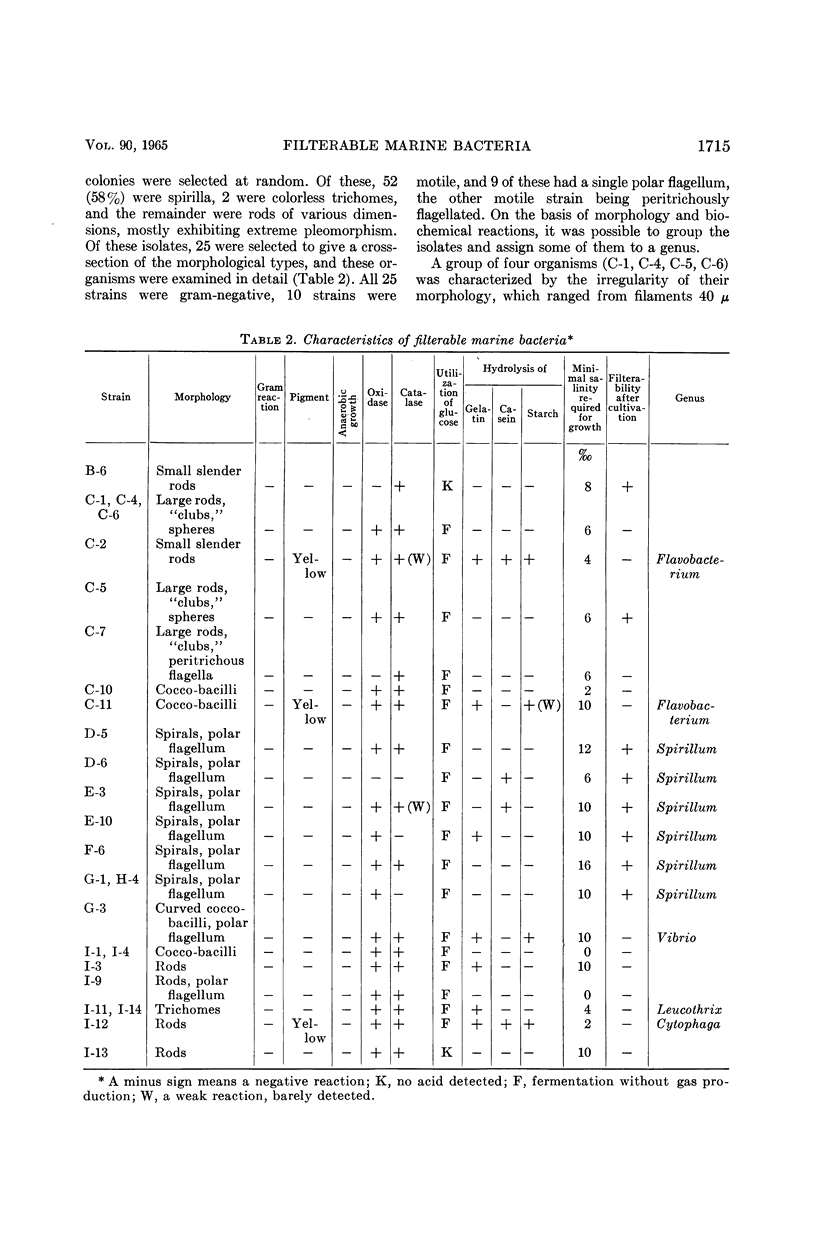
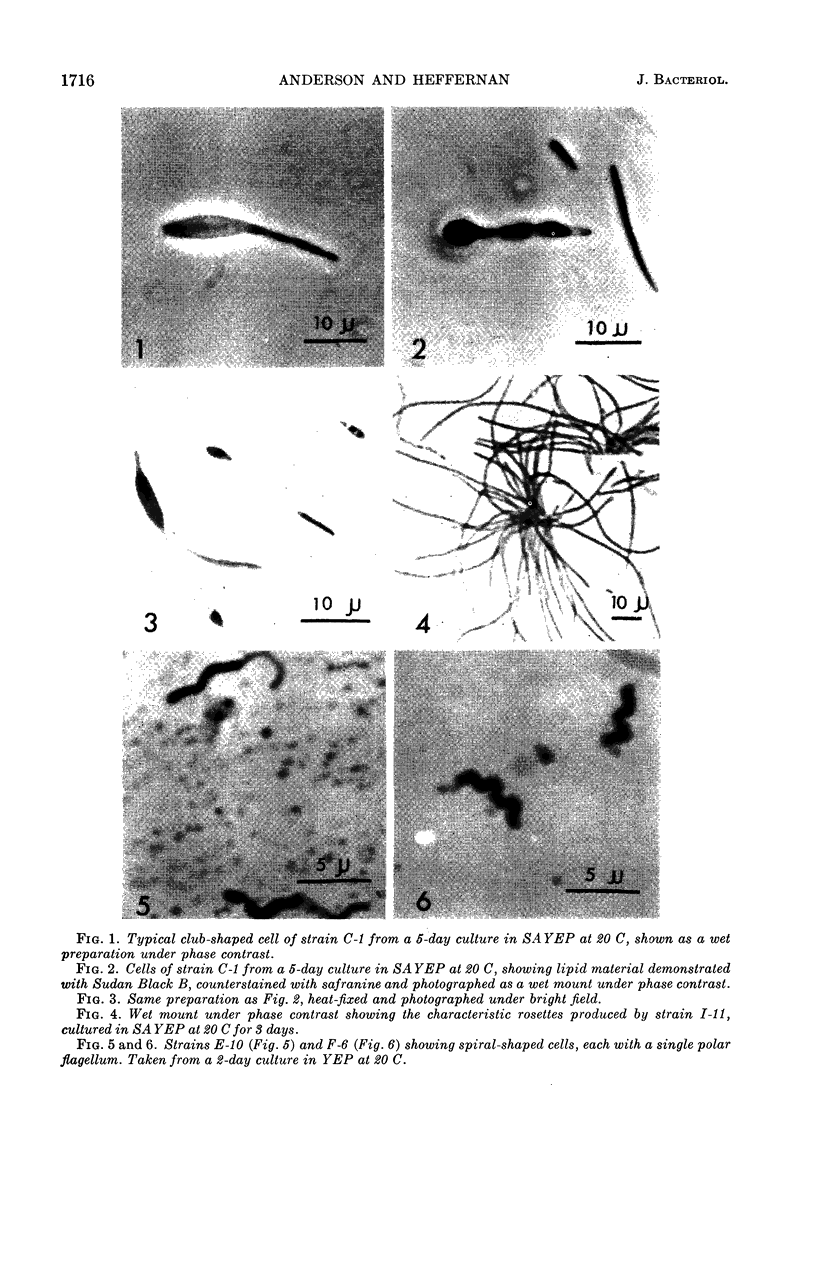
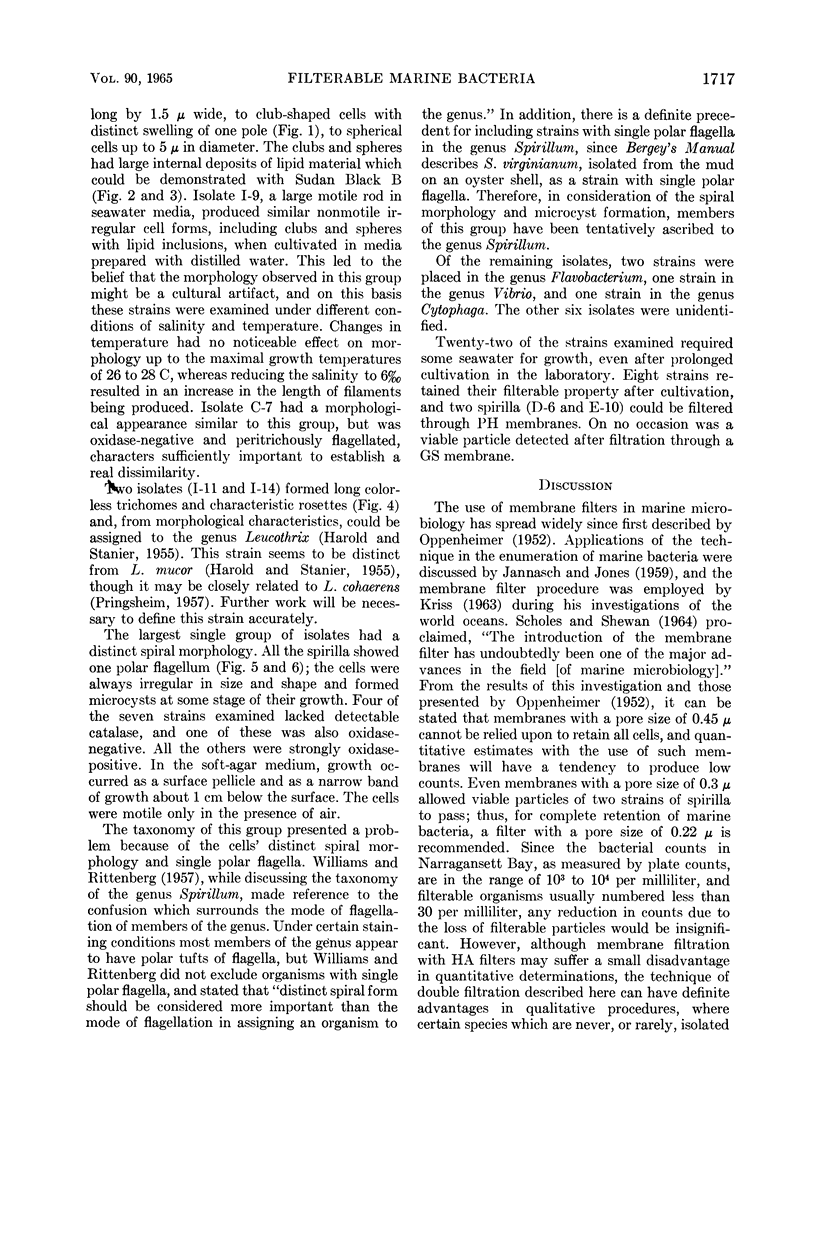
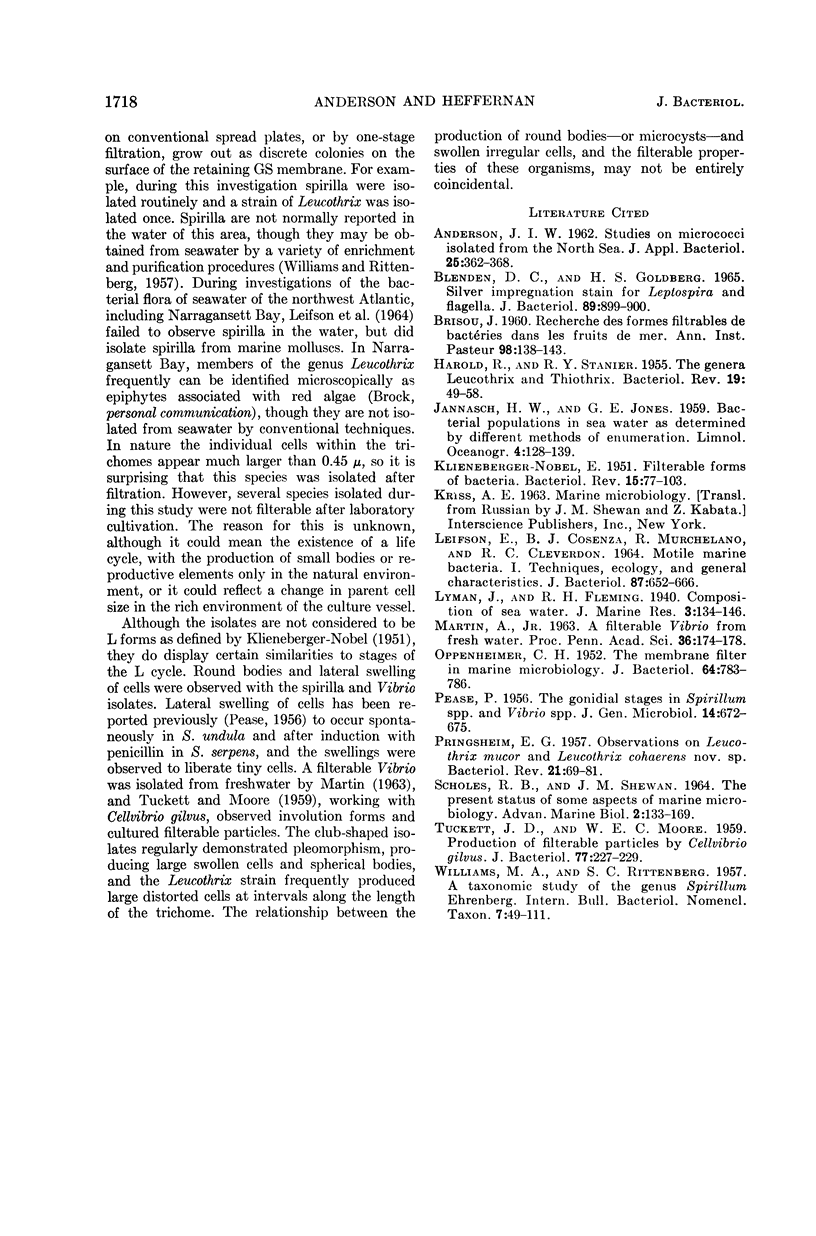
Images in this article
Selected References
These references are in PubMed. This may not be the complete list of references from this article.
- BLENDEN D. C., GOLDBERG H. S. SILVER IMPREGNATION STAIN FOR LEPTOSPIRA AND FLAGELLA. J Bacteriol. 1965 Mar;89:899–900. doi: 10.1128/jb.89.3.899-900.1965. [DOI] [PMC free article] [PubMed] [Google Scholar]
- BRISOU J. [Detection of filterable forms of bacteria in shellfish. Return to normal forms in ordinary media]. Ann Inst Pasteur (Paris) 1960 Jan;98:138–143. [PubMed] [Google Scholar]
- HAROLD R., STANIER R. Y. The genera Leucothrix and Thiothrix. Bacteriol Rev. 1955 Jun;19(2):49–64. doi: 10.1128/br.19.2.49-64.1955. [DOI] [PMC free article] [PubMed] [Google Scholar]
- KLIENEBERGER-NOBEL E. Filterable forms of bacteria. Bacteriol Rev. 1951 Jun;15(2):77–103. doi: 10.1128/br.15.2.77-103.1951. [DOI] [PMC free article] [PubMed] [Google Scholar]
- LEIFSON E., COSENZA B. J., MURCHELANO R., CLEVERDON R. C. MOTILE MARINE BACTERIA. I. TECHNIQUES, ECOLOGY, AND GENERAL CHARACTERISTICS. J Bacteriol. 1964 Mar;87:652–666. doi: 10.1128/jb.87.3.652-666.1964. [DOI] [PMC free article] [PubMed] [Google Scholar]
- OPPENHEIMER C. H. The membrane filter in marine microbiology. J Bacteriol. 1952 Dec;64(6):783–786. doi: 10.1128/jb.64.6.783-786.1952. [DOI] [PMC free article] [PubMed] [Google Scholar]
- PEASE P. The gonidial stages in Spirillum spp. and Vibrio spp. J Gen Microbiol. 1956 Jul;14(3):672–675. doi: 10.1099/00221287-14-3-672. [DOI] [PubMed] [Google Scholar]
- PRINGSHEIM E. G. Observations on Leucothrix mucor and Leucothrix cohaerens nov. sp. with a survey of colorless filamentous organisms. Bacteriol Rev. 1957 Jun;21(2):69–81. doi: 10.1128/br.21.2.69-81.1957. [DOI] [PMC free article] [PubMed] [Google Scholar]
- TUCKETT J. D., MOORE W. E. Production of filterable particles by Cellvibrio gilvus. J Bacteriol. 1959 Feb;77(2):227–229. doi: 10.1128/jb.77.2.227-229.1959. [DOI] [PMC free article] [PubMed] [Google Scholar]



